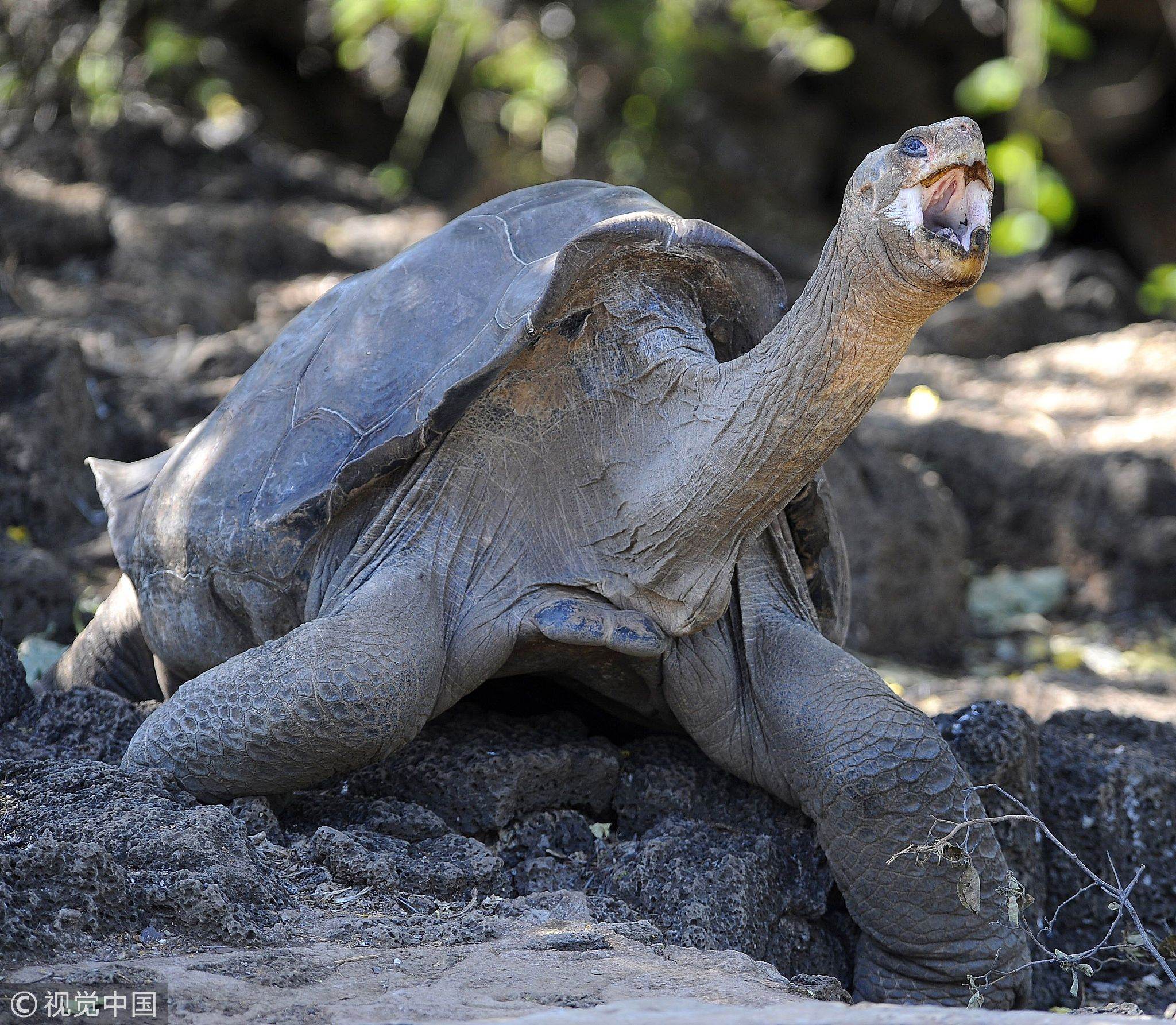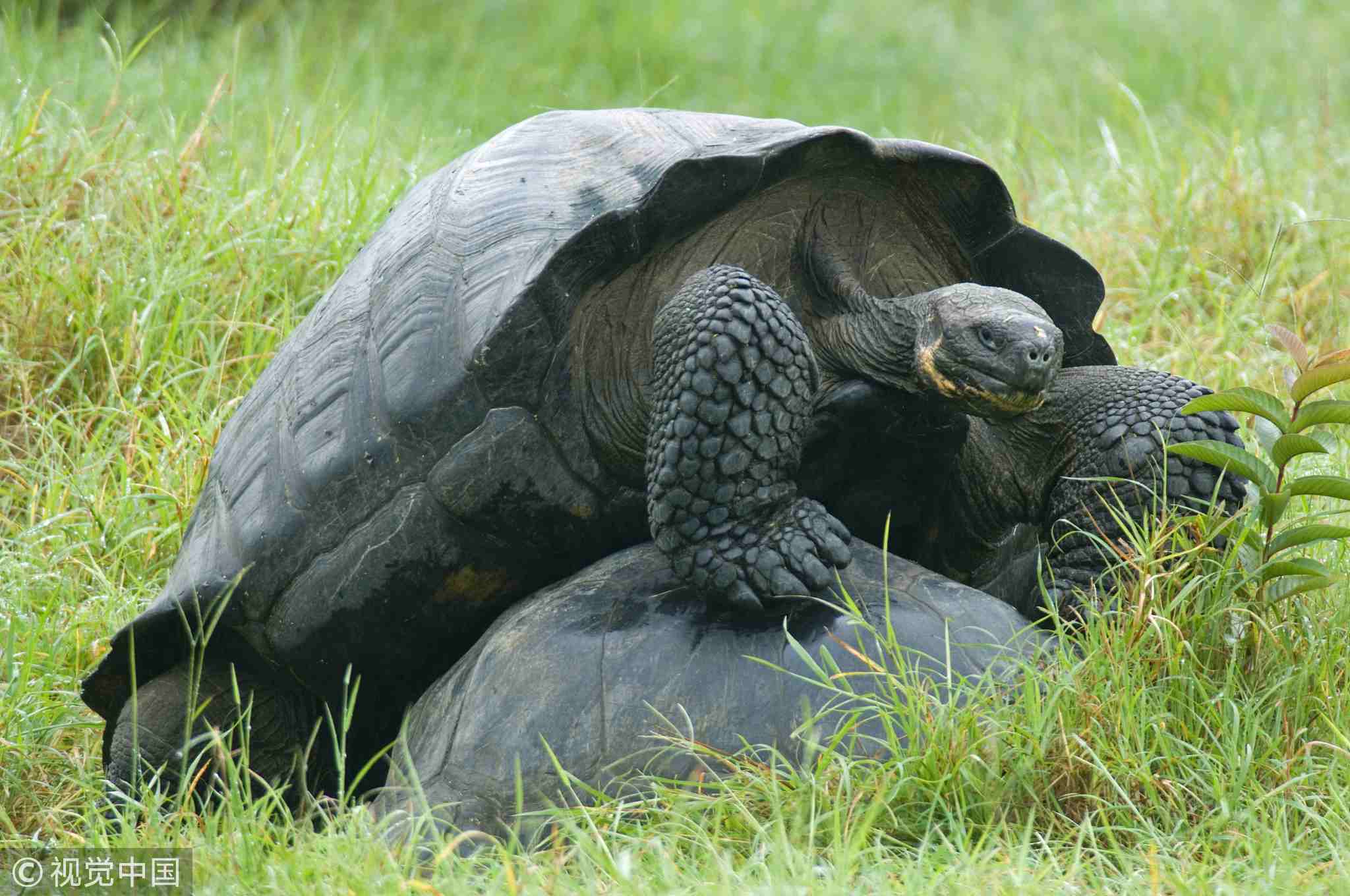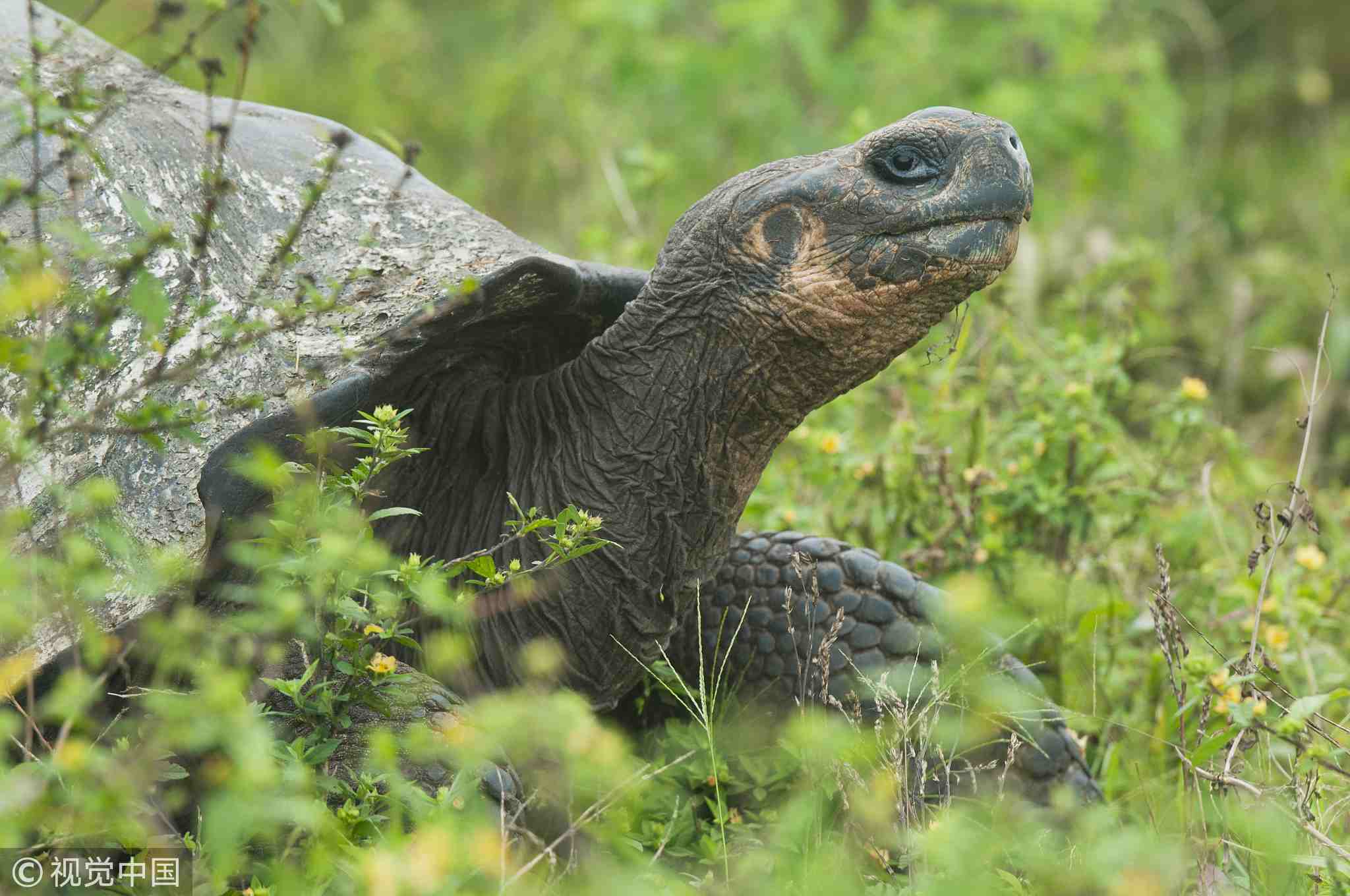
Nature
18:22, 04-Dec-2018
What contributes to the longevity of giant tortoises?
Updated
18:02, 07-Dec-2018
By Ding Qian

Giant tortoises, which can live for over 100 years in captivity, are among the world's longest-living animals.
Take Lonesome George, a famous Pinta Island tortoise. He was estimated to be between 80-100 years old when he died. Harriet, a Giant Galapagos Land Tortoise, was 176 years old when she passed away in 2006. Adwaita, an Aldabra giant tortoise who died at Alipore Zoological Gardens in Kolkata, was believed to have lived up to 250 years.

Lonesome George, the last known individual of the Pinta Island Tortoise, died in 2012. /VCG Photo
Lonesome George, the last known individual of the Pinta Island Tortoise, died in 2012. /VCG Photo
So how com giant tortoises can live for such a long time?
The new study conducted by researchers at Yale University, the University of Oviedo in Spain, the Galapagos Conservancy, and the Galapagos National Park Service provides hints.

Galapagos Giant Tortoise/ VCG Photo
Galapagos Giant Tortoise/ VCG Photo
They sequenced the genomes of two giant tortoises of the Galapagos and found that they possessed a number of gene variants linked to DNA repair, immune response, and cancer suppression not possessed by shorter-lived vertebrates.
According to the study published in the journal Nature Ecology & Evolution on December 3, they detected "lineage-specific variants affecting DNA repair genes, inflammatory mediators and genes related to cancer development."

Galapagos Giant Tortoise /VCG Photo
Galapagos Giant Tortoise /VCG Photo
Apart from this, giant tortoises' armored shells and their island habitat are also considered contributing to their longevity. As an island species, it has enjoyed natural protection from predators, and their shells can be a strong defense against predation.

Galapagos Giant Tortoise /VCG Photo
Galapagos Giant Tortoise /VCG Photo
The current International Union for Conservation of Nature (IUCN) conservation status for giant tortoises is "vulnerable" to extinction.
It is threatened by species introduced to the islands, such as dogs and cats, which prey on young tortoises, and cattle, which compete for grazing vegetation, according to the World Wildlife Fund (WWF).
"Uncovering the secrets of longevity will help with efforts to restore giant tortoise populations," said the Galapagos National Park director Jorge Carrion.
(With input from AFP)

SITEMAP
Copyright © 2018 CGTN. Beijing ICP prepared NO.16065310-3
Copyright © 2018 CGTN. Beijing ICP prepared NO.16065310-3